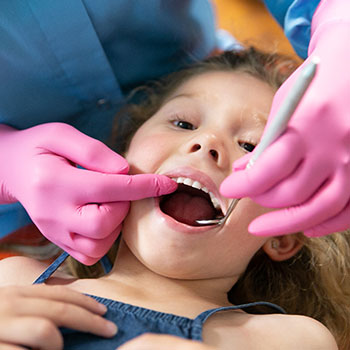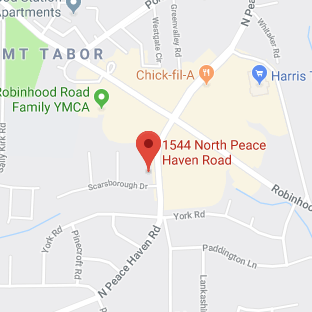After Visit Care Instructions
Post-operative instructions on this page
| Fluoride Varnish
| Front Tooth Build-Up
| Numbing (Local Anesthesia)
| Pain Management
| Sealants
| Separators
| Silver Diamine Fluoride (SDF)
| Silver or White Crowns
| Space Maintainers
| Tooth Colored Fillings
| Tooth Removal (Extraction)
| Tooth Trauma
| Dental Surgery Under General Anesthesia
Fluoride Varnish

- Your child should not brush or floss before bed so the fluoride can continue to soak into the teeth overnight
- Your child can eat and drink right away
- Avoid crunchy (i.e. nachos) or sticky (i.e. gummies) foods for 24 hours, as these items can remove the fluoride from the tooth surfaces
Front Tooth Build-Up

- If your child required a tooth build-up due to a recent dental injury, please follow the post-op instructions for tooth trauma
- If your child was numbed for the procedure, please follow the post-op instructions for numbing
- The repair material is not as strong as natural tooth structure and prone to break off again
- Avoid biting into hard foods with front teeth (such as nuts, carrots, hard candies)
- A mouthguard is recommended for contact sports
- If you child would like a custom-fit mouthguard to improve comfort, speaking, and breathing, we can make one at our office
- If your child grinds his/her teeth while sleeping, a nightguard is recommended
- If the build-up falls off, place any pieces in a plastic bag and call the dentist to schedule an evaluation
- If the build-up has fallen off several times, a dental crown may be indicated
Numbing (Local Anesthesia)
.jpg)
- The numbness will last from 1-4 hours
- When your child states that the numb area is feeling “tingly” or “itchy,” then the numbness is wearing off
- Avoid foods that requiring chewing
- Ideally, wait until numbness wears off before feeding your child
- If your child needs to eat, a soft food diet is recommended
- Monitor your child closely so he/she does not bite tongue, lips, cheeks, etc.
- The numb sensation is typically the most challenging aspect for your child to understand
- Sometimes, a distraction like a popsicle or rolled-up gauze can be helpful to prevent your child from traumatizing the numbed tissues
Pain Management

- If your child was numbed for his/her dental procedure, it is important to administer any pain medication before the numbing wears off
- For mild pain, have your child take acetaminophen (i.e. Tylenol) every 6 hours
- For moderate to severe pain, have your child alternate acetaminophen (i.e. Tylenol) and ibuprofen (i.e. Motrin) every 3 hours
- Always follow the dosing instructions on the bottle(s) for your child’s age and weight
Sealants

- Your child does not need to wait to eat or drink, as our sealant material is completely hardened or “set-up” at the end of the procedure
- Your child’s bite may feel slightly different. This feeling will go away over the next 1-2 days
- Avoid chewing on hard candies or ice, as these foods can chip the sealants
- If we notice any chipping or wear, we will discuss ways to repair the sealant
Temporary Sealants
- Occasionally, we will recommend temporary sealants if your child’s tooth is at a higher risk for cavities and is not yet fully in the mouth
- This material is more saliva-resistant and takes time to fully harden.
- A soft food diet is recommended for 24 hours.
- When the tooth is fully in the mouth, we will replace the temporary sealant with a regular dental sealant
Separators

- Avoid activities that could cause the separator to be displaced
- Avoid sticky foods (i.e. gummies, caramels, taffy, skittles, and gum) while the separators are in place
- Avoid flossing in areas with separators
- If a separator does become loose, please call our office so we can discuss options for replacement
- Expect your child’s teeth to be mildly sore for the next 24 hours
- Similar to braces, the separators cause the teeth to shift, which can cause soreness
- Have your child take acetaminophen (i.e. Tylenol) or ibuprofen (i.e. Motrin) for discomfort
Silver Diamine Fluoride (SDF) Application

- Avoid eating or drinking for 30 minutes, this will allow the SDF to fully penetrate the treatment site
- The area with darken over the next 24 hours
- If the soft tissues, such as the cheek or surrounding gums, accidentally contact the SDF, they will darken. This discoloration will go away completely within 10 days
Silver or White Crowns

- If your child was numbed for the crown procedure, please follow the post-op instructions for numbing
- Expect your child’s gums to be sore for the next 2-3 days
- When the crown is placed, it fits below the gumline, and the surrounding tissues need time to heal
- You can help the area heal faster with gentle brushing and flossing
- It is normal for the surrounding gums to appear discolored (i.e. red, purple, or white) or to bleed slightly during brushing
- Follow the post-op instructions for pain management to ensure your child is comfortable while healing
- It may take your child a few days to adjust to the crown. Do not let him/her pick at the area
- Avoid sticky or chewy foods (i.e. gummies, caramels, taffy, skittles, and gum) as they can cause the crown to become loose
- If the crown falls out, save it in a plastic bag and call the office to have it re-cemented
Space Maintainers

- Expect your child’s gums to be sore for the next 2-3 days
- When a space maintainer is cemented, it fits below the gumline, and the surrounding tissues need time to heal
- You can help the area heal faster with gentle brushing and flossing
- It may take your child a few days to adjust to the space maintainer. Do not let him/her pick at the area
- Avoid sticky or chewy foods (i.e. gummies, caramels, taffy, skittles, and gum) as they can cause the space maintainer to become loose
- If the space maintainer falls out, save it in a plastic bag and call the office to have it re-cemented
- If your child feels that the space maintainer is loose, please make sure the space maintainer is positioned correctly and call our office to schedule an assessment
Tooth-Colored Fillings

- If your child was numbed for the filling procedure, please follow the post-op instructions for numbing
- Our filling material is completely hardened or “set-up” at the end of the procedure, so your child only needs to wait to eat if he/she is numb
- For any discomfort, acetaminophen (i.e. Tylenol) or ibuprofen (i.e. Motrin) is recommended
- The tooth may be hypersensitive (have an increased sensation to hot, colds, or biting) for 1-2 weeks following the procedure
- Even though your child’s cavity is gone, a new one could form
- Fillings can get recurrent decay (a cavity that forms beneath the filling), and they should be brushed and flossed like a natural tooth
Tooth Removal (Extraction)

- Please follow the post-op instructions for numbing
- Your child should bite on a piece of gauze for 10-20 minutes following the procedure to stop the bleeding
- Later in the day, when your child eats or brushes, it is not uncommon for the area to start bleeding again. If this happens, place another piece of folded gauze in the mouth and have your child bite and hold for 10-20 minutes
- A small amount of oozing from the site for 1-2 days is normal. However, if the area continues to bleed excessively after biting on gauze for 10-20 minutes, call our office ASAP
- Avoid straws, spitting, sippy cups, bottles, and pacifiers for 24 hours
- Avoid hard, crunchy, or spicy foods for 24 hours
- A soft food diet is recommended
- For any discomfort, acetaminophen (i.e. Tylenol) or ibuprofen (i.e. Motrin) is recommended
- It is important for your child to start taking these medications before the numbing wears off in the next 1-4 hours
- For more information how to administer these medications for optimal pain management, please see our post-op instructions for “Pain Management”
Tooth Trauma

- Your actions may promote healing
- Keep the area clean with gentle yet thorough oral hygiene, especially along the gumline
- An antimicrobial mouth rinse may be prescribed to promote gum healing
- A soft food diet is recommended for 10 days
- Ibuprofen (i.e. Motrin) is recommended for 2 days for pain control and anti-inflammatory properties
- Any oral injuries could damage the nerve of the tooth
- If the nerve does not heal, further treatment is required
- Follow-up visits may be recommended so the dentist can make sure the area is healing appropriately
- Please call our office if you observe any of the following: darkening of the tooth, increased pain or mobility, or abscess (gum pimple above the tooth)
- If the injured tooth is a baby tooth, there is a chance the developing permanent tooth also was injured
- The best way to prevent further injury is to follow-up with the dentist as recommended
- If age-appropriate, have your child wear a mouthguard for contact sports
- If you child would like a custom-fit mouthguard to improve comfort, speaking, and breathing, we can make one at our office
Dental Surgery Under General Anesthesia
- If your child was asleep for his/her dental treatment, there are several steps to help your child’s recovery
- Sore throat and irritability are common following dental surgery
- Follow the post-op instructions for pain management
- Nausea is common immediately following dental surgery
- First, give your child clear liquids (water, apple juice, clear broth). If your child can keep these down, you may move to bland foods (yogurt, crackers, rice)
- A soft food diet is recommended for the first 24 hours
- Give your child plenty of fluids over the next 24 hours
- A slightly elevated temperature after surgery is often due to dehydration and be controlled by increasing fluid intake or by taking ibuprofen (i.e. Motrin) or acetaminophen (i.e. Tylenol)
- If a significant fever (>101.4oF) occurs, call our office immediately or go to your local emergency room
- Do not brush or floss the teeth until tomorrow as the mouth will be sore tonight
- This will also allow the fluoride varnish treatment soak into the teeth overnight
- You may resume your normal brushing and flossing routine tomorrow morning
- If your child is having issues such as a fever (>101.4oF), bleeding, or other medical problems related to dental surgery, call our office immediately go to your local emergency room
- Please return for your follow-up appointment so we can ensure your child’s mouth is and healing normally




